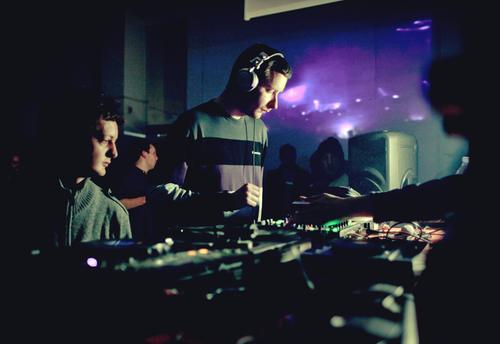Over the past couple of years it seems as if the notion of “bass” music has transformed into a Frankstein-ish monster. The sound of dubstep is getting hammered throughout the globe and while the music gets more chaotic by the hour, it still feels like many producers are creating a bastardized sound that plays it safe for the clubs and festivals. However, there are many of us who remember listening to producers like Wookie and Zed Bias during the Garage days who manipulated and twisted bass lines that became darker and heavier tunes than some of the smoother sounds of UKG at the time. Shortly after, two separate musical off spring emerged in the form of dubstep and Wiley’s eskimo sound which help to spawn grime. All of this leans to the idea that, while it may be some what good that people all over the world are making what they interpret as “bass” music, some of us simply want to hear the particular original sublow soundtracks that attracted us to these scenes from the start.
Dusk + Blackdown’s latest release “Dasaflex” reflects the core of modern British electronic music that rose from the depths of council estates, youth clubs, pirate radio and the ‘DIY’ spirit. The album is a hybrid of UK Garage, tech inspired dubs, tropical and straight ahead grime. The record begins with the deep and melodic “Lonely Moon” which features Farrah. The airy mood floats with an aquatic audible high for a good 7 minutes. The somewhat dark and nocturnal “High Road” follows, picking up the pace with a post UKG appeal. “Apoptosis” is a weighty, brutal sonic beatdown as literally growls sampled from Durrty Goodz, add to the husk. “R in Zero G” is Dusk + Blackdown at their finest balancing sublow with beautiful melodies over manic grime style programming. Each song on the album has a life of its own yet somehow stands perfectly beside the next.
“Dasaflex” is more than a “purist” album but simply a great record from two guys who have been involved and litereally covered the scenes (Blackdown is also journalist) that they loved. This is a great marker for listeners and producers alike to understand a blueprint of what is now popular UK music as well as get an idea of where it can go.


